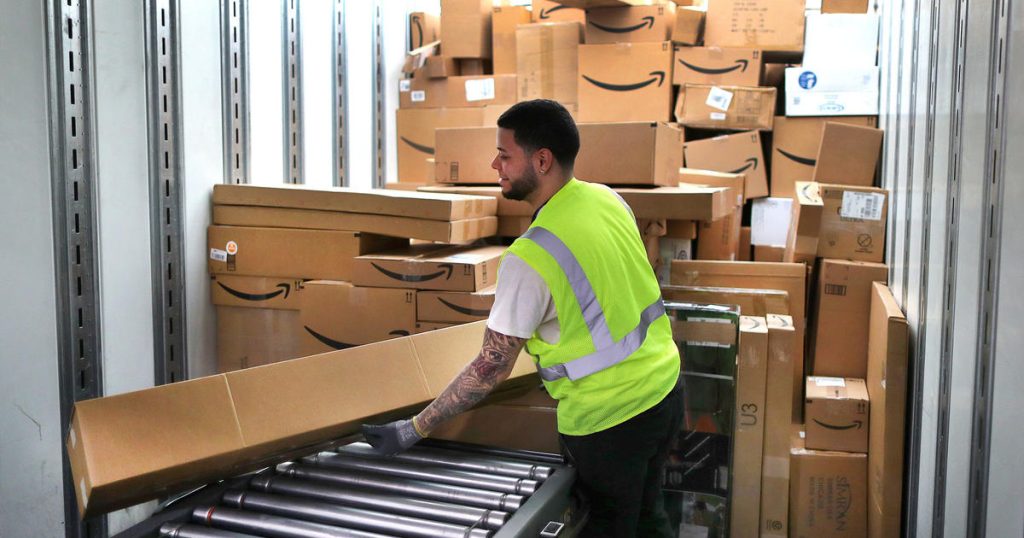A recent report has shown that roughly half of frontline warehouse workers at Amazon are struggling to make ends meet, despite the online retailer raising minimum hourly wages to $15 five years ago. The study, conducted by the Center for Urban Economic Development at the University of Illinois Chicago, found that 53% of workers experienced food insecurity, 48% had difficulty covering rent or housing costs, and 56% were unable to pay their bills in full. This indicates a significant shift from the past, where large companies provided a path to the middle class and economic security, according to Dr. Sanjay Pinto, a senior fellow at CUED.
Even though they work for one of the largest and most profitable companies in the U.S., one-third of Amazon warehouse employees have relied on publicly funded assistance programs like SNAP. The data from the report suggests a disparity between worker earnings and economic stability. The study was based on survey responses from 1,484 workers across 42 states and was supported by the Ford Foundation, Oxfam America, and the National Employment Law Project. Amazon warehouse worker Linda Howard expressed that the pay is inadequate for the physically demanding job and believes that every associate should receive a livable wage.
The report also highlighted the financial hardships faced by warehouse workers who take unpaid time off due to work-related pain or exhaustion. Sixty-nine percent of Amazon warehouse workers have had to take time off for these reasons, and 60% of those who take unpaid time off due to pain or exhaustion experience food insecurity. Dr. Beth Gutelius, the research director at CUED and co-author of the report, noted that there is a correlation between health and safety issues at the company and economic insecurity among its workforce. Amazon contested the survey’s findings, calling the methodology flawed and disputing the veracity of the responses used. The company stated that its average hourly pay in the U.S. is now $20.50, pointing out that earlier research from the same groups focusing on workplace safety and surveillance was also criticized.
In April, Amazon had criticized earlier research from the same groups that focused on workplace safety and surveillance at Amazon warehouses. The company disagreed with the characterization and conclusions made in the research, citing flawed methodology and hyperbolic anecdotes. Amazon also expressed doubt about the authenticity of the responses used in the reports, claiming that researchers could not verify if the respondents actually worked for Amazon. Despite these challenges, the report sheds light on the struggles faced by frontline warehouse workers at Amazon and calls for attention to the economic difficulties they face. The disparity between worker earnings and economic stability emphasizes the need for fair compensation and better working conditions in the industry.


